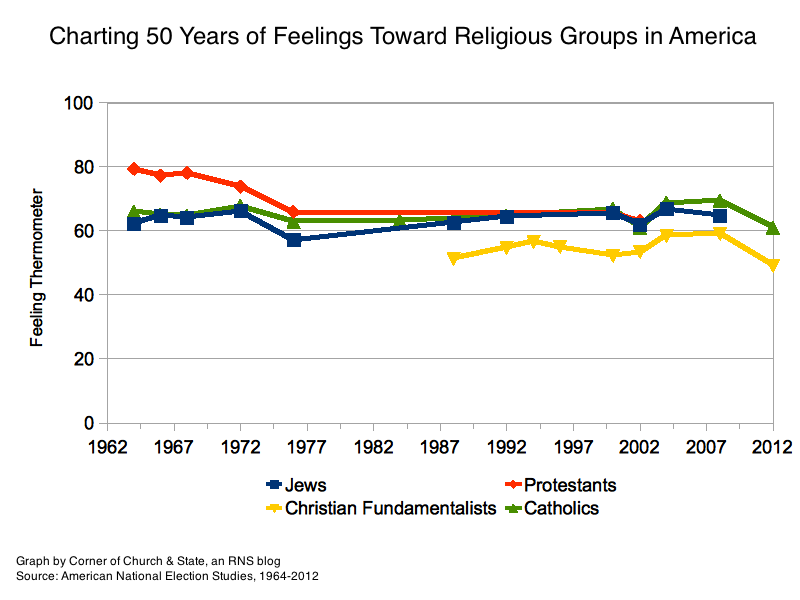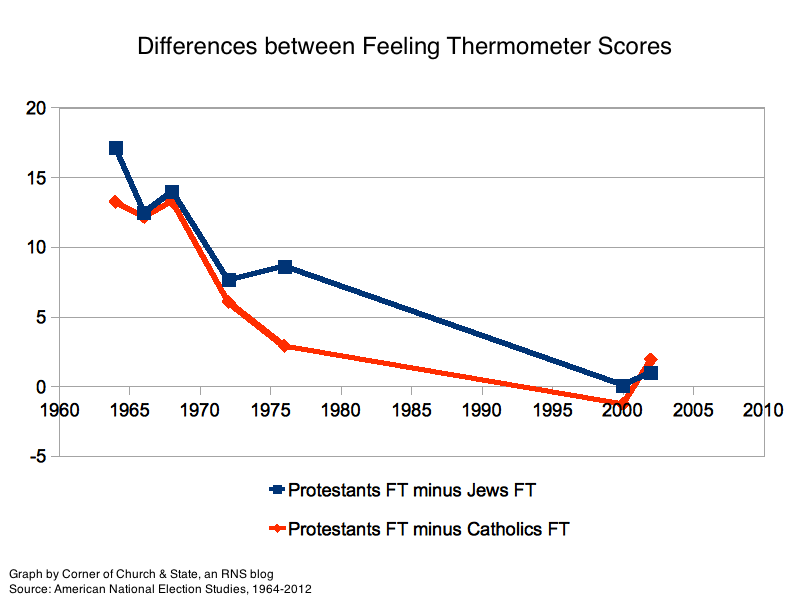Pew’s recent report is not the first to examine how Americans feel toward religious groups. For fifty years, the American National Election Study has asked people how “warm” or “cold” they feel toward Jews, Protestants, and Catholics. Other groups, like “Christian Fundamentalists” and atheists were added later.

The American National Election Study has been asking “feeling thermometer” questions about Protestants, Catholics, Jews, and other groups since 1964.
American religion in 1964 was largely seen as a world of Protestants, Catholics, and Jews. Other groups existed, of course, and there were divisions within Protestantism, but these were not as politically salient as they are today.
Since 1964, ratings for Jews and Catholics have remained remarkably stable. Pew’s “finding” that Jews were well-liked is not new. Not in the least. For fifty years, scores for Jews and Catholics have remained in the mid-to-low 60s. Compare this to “Christian Fundamentalists”, which were introduced to the survey in the 1980s. This groups is consistently ten points lower.

The differences between the average feeling thermometer scores for Protestants and for Catholics and Jews. American National Election Studies, 1964-2004 (the last year that included all three groups).
But the consistency of feelings toward Jews and Catholics doesn’t mean that feelings haven’t evolved over time. Scores are relative. In the 1960s, Jews and Catholics were scored in the low 60s, but ratings of Protestants were nearly 80. Even in the 1970s, Protestants received average scores 10 points higher than Jews.
The ANES didn’t include thermometers for Protestants during the 1980s or 1990s. In 2000 and 2002, Protestants were put back in. Unlike decades ago, feelings toward all three groups had equalized. Feelings toward Protestants are no longer higher than those of Jews and Catholics.
Surveys like Pew’s recent poll provide a snapshot of public opinion, but it often takes a long view to understand the results.
I reported on recent ANES feeling thermometers here. It includes ratings for Mormons, “Christians”, and other groups in the 2012 ANES.





